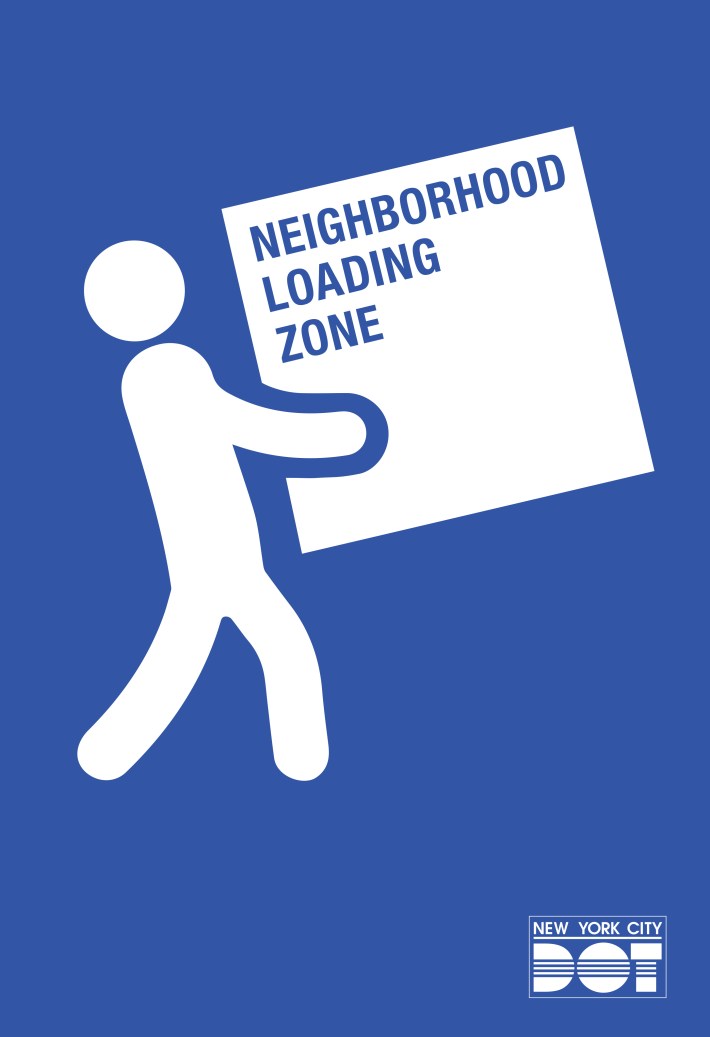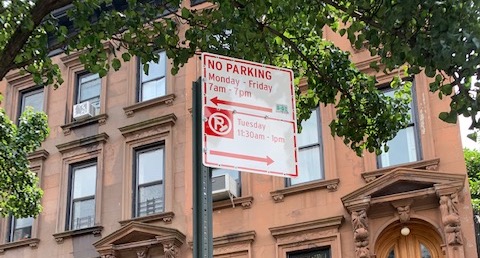The Department of Transportation's Neighborhood Loading Zone program is tiptoeing back into Brooklyn — after zones were removed there last summer because of pushback from entitled drivers who demanded that the city keep its hands off free car storage.
Last week, the DOT presented a proposal to Community Board 6 for 12 loading zones in Park Slope — replacing those removed from nearby Clinton Hill and Fort Greene last August after car-owning residents complained to their Council Member, Laurie Cumbo, that the zones claimed too much parking.
Unlike the frosty reception in those neighborhoods, the DOT proposal to add the loading zones in Park Slope passed the transportation committee of the community board unanimously after very little discussion, according to attendees. It will come before the full community board March 11. Community board resolutions are only advisory, but the DOT brings all street changes before the boards.
“We should applaud DOT for moving forward after last year's silliness in Fort Greene,” said Brooklyn safe streets activist Doug Gordon, a public member of CB6. “But the fact that a city as big as New York has so few loading zones and is still piloting something that is standard practice all over the world is not something we should ignore. We have a lot of catching up to do just to make our streets function at a very basic, rational level. We're way behind where we need to be.”

The Loading Zones Program seeks to decongest residential streets that are increasingly clogged by the explosion in residential deliveries and app-based taxis during the last decade — traffic that has tripled between 2009 and 2017, thanks to millions more Uber and Lyft rides, plus 1.1 million package deliveries per day, with 41 percent of city households receiving at least two package deliveries per week. Several Manhattan community boards recently asked the DOT to study new uses for their curbs — including the elimination of free parking.
But any program that takes away curbside space from parking in New York City is controversial — even one with demonstrable benefits for the majority of the population that gets goods and services delivered. And the potential to save lives, too: Blocked roadways and bike lanes have figured in any number of crashes, including the the 2018 crash that killed cyclist Madison Lyden, who was forced out of the Central Park West bike lane by a parked livery car and into the path of a garbage truck.
Yet in a city of 8.5 million, the loading zones remain a pilot project in just eight neighborhoods — two apiece in Manhattan, the Bronx and Queens and one each in Staten Island and Brooklyn. After the Fort Greene debacle, the only zones now in Brooklyn are in Williamsburg — even as Brooklyn, with more than 2.5 million residents, ranks as the city's most-populous borough. The city has all of 62 neighborhood loading zones (sometimes called residential loading zones, in order to distinguish them from the more common commercial ones), a number that will rise to 74 when the DOT installs the new ones in Park Slope.
The DOT plans to install five loading zones on Second Street and seven on Third Street; the zones on Second Street (between Fifth Avenue and Prospect Park West) will remove some eight to 10 parking spaces; the ones on Third Street (between Fourth Avenue and Prospect Park West) will claim nine to 12 spaces, the department said,
Cumbo did not return Streetsblog's request for comment about whether she had reconsidered her opposition to loading zones, which make streets safer by keeping car traffic flowing and not forcing cyclists into traffic. But last year, she did not see the benefit of safer streets for her constituents, telling Kings County Politics that the DOT was ignoring "a really diverse community of schools, churches of double parking, local businesses, and all these things."






